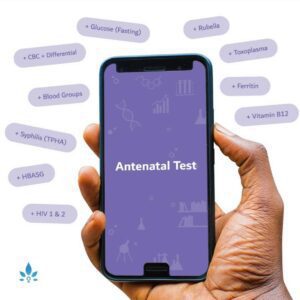Induction of Labour


Labour induction is when the uterus is artificially stimulated to start contracting. The World Health Organisation recommends that labour is only induced when the expected benefits outweigh the harm, and when there is a clear medical indication for doing so; for example:
- If the pregnancy reaches 42 weeks gestation. No woman should be forced to have a induction, however, all women will be offered one if their pregnancy reaches this stage.
- Risk to the health of the mother; the most common being high blood pressure, which can be a warning sign of preeclampsia.
- Risk to the health of the baby, such as a slowing in growth rate.
- Waters have broken, but there are no contractions. Once the waters break, the protective barrier of the amniotic sack is lost and the risk of infection increases. An attempt should be made to artificially induce labour within 24 hours.
Whilst it does happen, labour should not be induced on non-medical grounds, such as a desire to deliver on a certain day. This is because with an induced labour, there is always a slightly increased risk of complications, including uterine hyperstimulation (the duration of each contraction exceeds two minutes, or the frequency of contractions increases to more than five in a 10 minute timespan), this can cause foetal heart rate abnormalities and a risk of uterine rupture; maternal bleeding and, in very rare cases, foetal distress. Furthermore, inductions are not always successful and can be more painful than natural labour.
Prior to labour induction via mechanical or pharmaceutical means, a membrane sweep will usually be offered. This is where a doctor or midwife runs their finger around the neck of the cervix, in an attempt to separate the amniotic sack from the wall of the uterus. If successful, the release of naturally occurring prostaglandins will trigger labour. Prostaglandins are hormone-like compounds that have a role in the inflammatory response. When released by the uterus they stimulate it to contract.
If the sweep is unsuccessful, a formal induction of labour might be offered. This can be mechanical, whereby a balloon catheter is inserted into the vagina to stretch the cervix, or pharmaceutical, whereby medication is given in oral, topical (gel) or pessary form. The two most commonly used are oxytocin, which is given orally and works well if used alongside mechanical interventions; and prostaglandins, given topically as a gel, via a pessary, or orally. Sometimes both are given; prostaglandins first to ripen the cervix, they cause it to soften and thin; and then oxytocin to stimulate uterine contractions. Additionally, if labour is slow to progress, oxytocin may be administered via a drip to increase the frequency and duration of contractions.
The safety of mother and baby remains of the utmost importance. Your health care practitioner will discuss with you the available options, including whether induction or C-Section would be best.
Nabta is reshaping women’s healthcare. We support women with their personal health journeys, from everyday wellbeing to the uniquely female experiences of fertility, pregnancy, and menopause.
Enjoy Nabta’s the love birthing course and learn more.
Get in touch if you have any questions about this article or any aspect of women’s health. We’re here for you.
Sources:
- Pierce, S, et al. “Clinical Insights for Cervical Ripening and Labor Induction Using Prostaglandins.” AJP Reports, vol. 8, no. 4, Oct. 2018, pp. e307–e314., doi:10.1055/s-0038-1675351.
- Inducing Labour. NHS, 27 Feb. 2017, www.nhs.uk/conditions/pregnancy-and-baby/induction-labour/.
- WHO Recommendations for Induction of Labour. World Health Organisation, http://apps.who.int/iris/bitstream/handle/10665/44531/9789241501156_eng.pdf?sequence=1. Accessed on 23/01/2019.












































